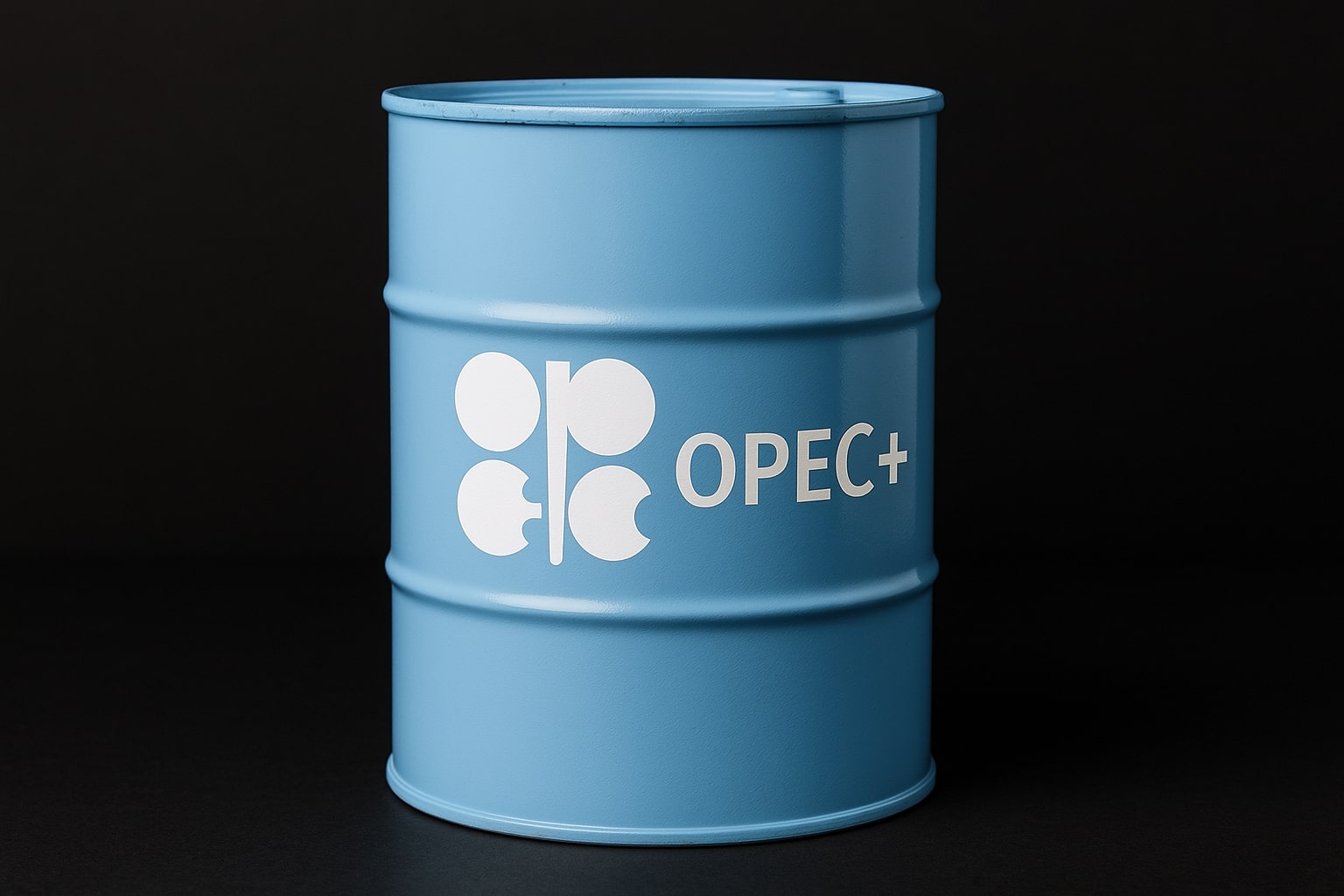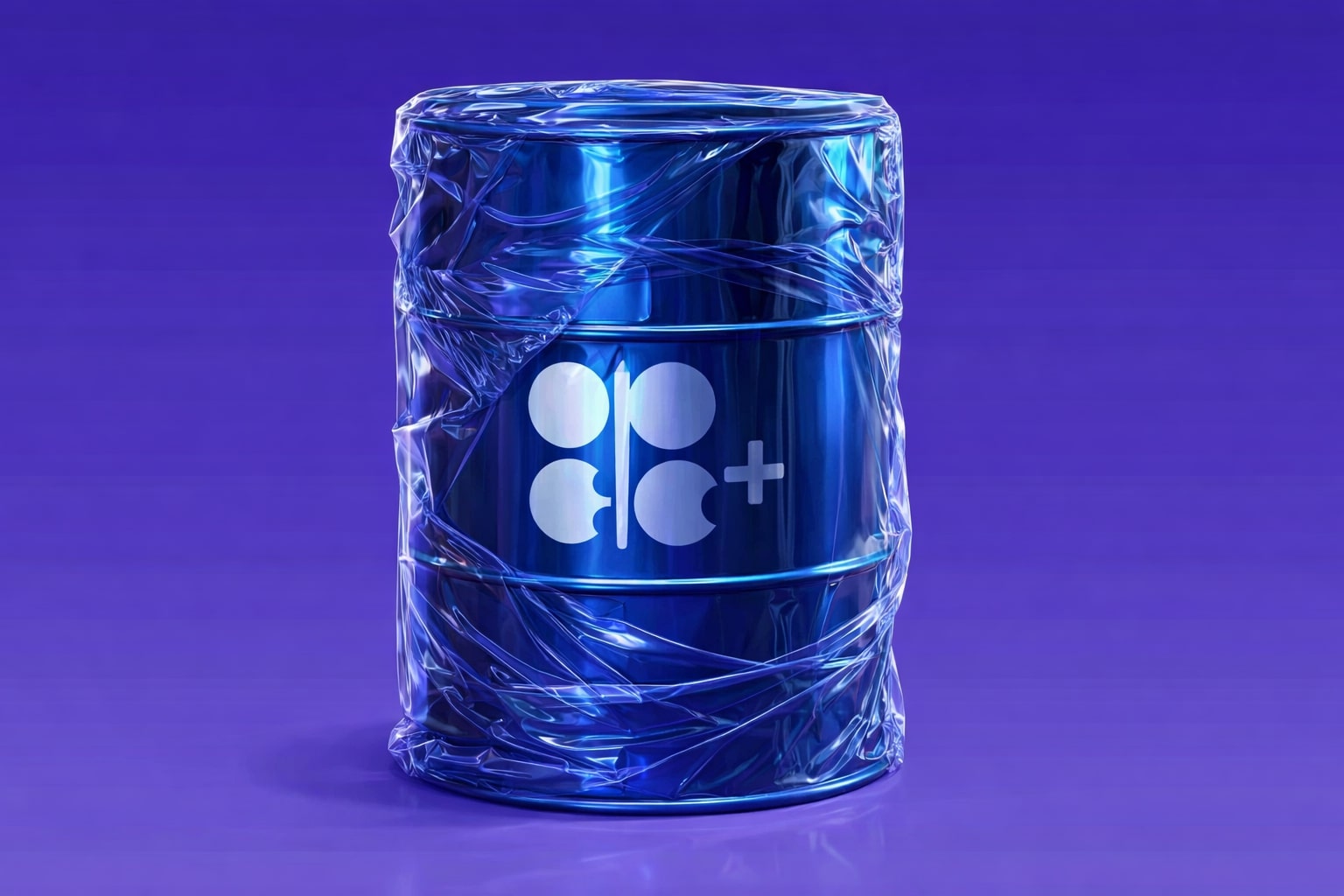WTI (CL=F) and Brent (BZ=F) Struggle to Hold Gains Amid Mounting Trade and Supply Forces
Crude benchmarks are stuck in limbo, weighed down by conflicting supply-and-demand signals and geopolitical uncertainty. WTI Crude (CL=F) is hovering around $65.41, ticking up +0.25%, while Brent (BZ=F) sits at $68.58, edging just +0.10% higher. Despite early-session attempts to rally past resistance—especially as WTI briefly pierced its 50-day EMA—momentum remains severely capped. Technical traders are eyeing $68.20 and $70 as upside ceiling levels on WTI, but recent rallies are fading fast. Brent shows similar behavior, losing steam after testing the $68 handle, with upside capped near $71, defined by its 200-day EMA.
The market remains rangebound due to the lack of a convincing narrative. Price action reflects exhaustion, not breakout strength. Short-term support at $65 for WTI and $68 for Brent remains the key battleground as traders hesitate to place long-term directional bets without clearer macro resolution.
Crude Inventories Deliver Unexpected Bullish Surprise
Inventory dynamics delivered a jolt of optimism this week. The EIA reported a 3.17 million-barrel decline in U.S. crude stockpiles for the week ending July 19, doubling forecasts. This drawdown left inventories 9% below the five-year seasonal average, signaling a material tightening in supply. Gasoline stocks also retreated by 1.7 million barrels, suggesting firm demand into peak summer driving season. However, distillates climbed 2.9 million barrels, a typical seasonal adjustment.
Still, the bullish impact was blunted. Despite the inventory draw, futures markets reacted with mild positivity—WTI up 0.29%, Brent up 0.25%—highlighting broader hesitancy tied to macro headwinds. The supply side is providing support, but it’s failing to overcome demand-side uncertainty.
TotalEnergies (NYSE:TTE) Shows Resilience Despite 10% Brent Drop
French major TotalEnergies (TTE) offered a high-resolution lens into how producers are navigating this turbulent pricing regime. The firm posted $3.6 billion in adjusted net income for Q2 2025, a 15% decline QoQ, yet generated $6.6 billion in operating cash flow, underscoring resilience amid a 10% quarter-over-quarter decline in Brent prices.
Crucially, production rose by 3% YoY to 2.53 million barrels of oil equivalent/day, supported by new capacity from Ballymore (U.S.) and Mero-4 (Brazil). Their Integrated LNG segment added $1 billion in operating profit, despite tracking the broader oil price softness. Meanwhile, refining and chemicals produced $0.8 billion, buoyed by seasonal strength at the pump and marginal improvement in crack spreads.
TotalEnergies’ investment discipline remained intact. Capital deployment hit $11.6 billion in H1, with $2.2 billion earmarked for strategic acquisitions—including a German renewables developer and deepwater exploration blocks from Chevron. The firm confirmed it will maintain full-year capex within the $17–$17.5 billion range.
In shareholder returns, a 7.6% dividend increase was authorized (€0.85/share), alongside $2 billion in Q3 buybacks. With internal employee ownership climbing to 9%, corporate alignment with transition targets remains tight. Despite price volatility, TotalEnergies is leaning into scale and transition capital with conviction.
Refined Fuels and Petrochemical Pressure Deepens as Imports Surge
Refined product data offers further demand-side skepticism. U.S. gasoline prices dipped to $2.087, down -1.59%, reflecting soft demand as imports surge. That weakness is mirrored in downstream segments, where global refining throughput is ramping up but margins are thinning. This is already reverberating in earnings. Equinor’s earnings fell despite robust output, while Halliburton issued a soft warning on the oilfield services outlook, citing weakening contract activity into Q3.
This refined product oversupply is compounding the difficulty for upstream players trying to hold price floors amid muted global growth. Downstream weakness is quickly spilling into upstream caution.
Geopolitical Risks Flash But Fail to Trigger a Price Response
Oil has historically been hypersensitive to geopolitics, but not this cycle. Despite Iran exporting 1.9 million bpd, widespread power protests, and rising domestic discontent, markets remain indifferent. Similarly, Russia’s gas production has surged into China, but its crude production is sliding. The market’s muted response suggests geopolitical fatigue: only major supply shocks are now potent enough to move the needle.
The EU’s ongoing sanctions on Indian refiner Nayara are causing redirection of fuel flows and increasing reliance on gray market intermediaries, yet Brent remains pinned below $70. Even new U.S.-Japan trade terms—which eliminate U.S. energy export bottlenecks and include a $550 billion investment commitment—have not changed oil’s rangebound profile.
Electric Vehicle Drag: European Demand for Crude Weakens as Hybrid Sales Surge
Demand outlooks are dimming further as EU transport fuel usage falls. New car sales in Europe fell by 7.2% in June, with internal combustion engines taking the largest hit. Gasoline car registrations are down 21.2%, diesel plunging 28.1%, while hybrids spiked +41.6% YoY. Electrification is reducing the velocity of refined fuel consumption in major developed markets. The shift is structural.
This matters not just for gasoline demand but for refining margins and the entire midstream stack. With European oil demand plateauing, and Asian consumption uneven, producers are losing pricing power faster than expected.
Valero (NYSE:VLO) and California: Refinery Closures Threaten Local Supply Tightness
Refinery-specific supply shocks are being artificially contained by political intervention. California’s Governor stepped in to rescue a Valero refinery from closure to prevent an acute regional fuel price shock. The fact that government action is now required to maintain refining capacity highlights the structural imbalance between ESG-driven shutdowns and actual demand.
Yet none of these events—not even supply vulnerabilities in California—have sparked sustained price upside. Markets are no longer reacting to one-off disruptions; systemic factors are now firmly in the driver’s seat.
Trade Tensions and Currency Risk Cast Shadow Over Oil Bulls
With Trump’s August 1 tariff clock ticking and the EU threatening retaliation, energy markets are bracing for turbulence. Even as the UK and India inked a £6 billion trade deal—cutting auto and liquor tariffs—the upside impact on oil demand remains modest. Trade policy is now a headwind more than a catalyst. Until resolution or escalation, it’s freezing capital flows and reinforcing bearish inertia.
The U.S.-EU dispute over digital levies and tech regulation is particularly relevant. If unresolved, it risks creating broader GDP drag across both regions, further dampening oil consumption outlooks. In short: macro is choking momentum faster than supply can tighten.
Verdict: Crude Oil (CL=F / BZ=F) = HOLD with Downside Risk Tilt
Despite temporary strength in inventory and disciplined producer cash flow management, oil markets remain structurally weak. WTI around $65.41 and Brent at $68.58 reflect tight trading zones, not upward trend channels. Every upside catalyst—tight inventories, production discipline, geopolitical friction—is being neutralized by slowing global growth, collapsing refined product demand, EV penetration, and unresolved trade disputes.
Momentum is lacking, technical resistance is holding, and volatility is compressed. The best positioning remains neutral to slightly defensive. Crude is a HOLD, with a bias toward rangebound weakness unless either trade resolution or a sudden OPEC+ cut materializes. Longs should stay light, tactical, and hedge-aware. Shorts can wait for failed rallies near $70–71 before pressing. No new trend until macro direction returns.




















